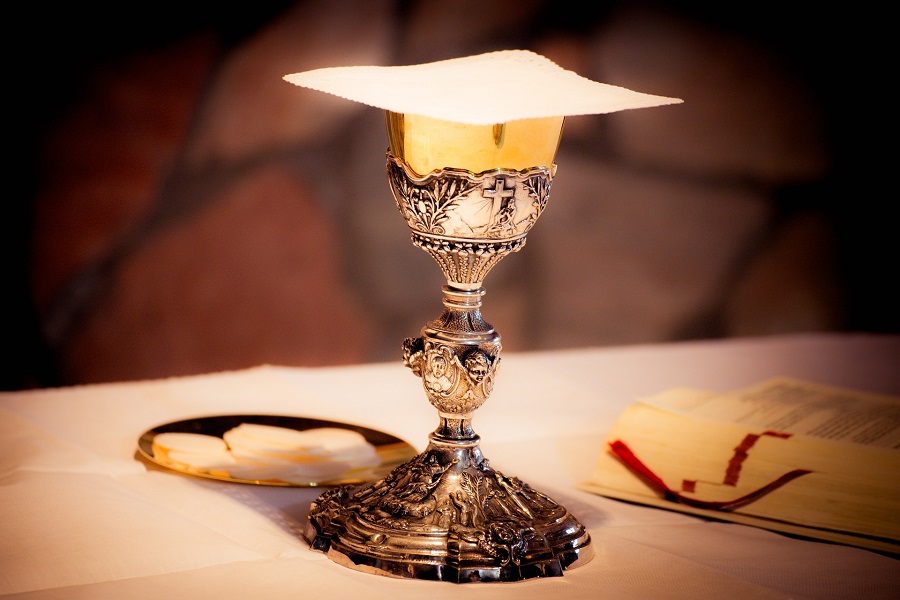
Feast of Corpus Christi
06-19-2022Weekly ReflectionThe Feast of Corpus Christi ... also known as the Solemnity of the Most Holy Body and Blood of Christ, is a Roman Catholic liturgical solemnity celebrating the Real Presence of the Body and Blood, Soul and Divinity of Jesus Christ in the elements of the Eucharist. The feast of Corpus Christi was proposed by Thomas Aquinas, Doctor of the Church, to Pope Urban IV, in order to create a feast focused solely on the Holy Eucharist, emphasizing the joy of the Eucharist being the Body and Blood, Soul and Divinity of Jesus Christ.
Having recognized in 1264 the authenticity of the Eucharistic Miracle of Bolsena, on input of Aquinas, the pontiff, then living in Orvieto, established the feast of Corpus Christi as a Solemnity and extended it to the whole Roman Catholic Church.
The feast is liturgically celebrated on the Thursday after Trinity Sunday or, "where the Solemnity of The Most Holy Body and Blood of Christ is not a holy day of obligation, it is assigned to the Sunday after the Most Holy Trinity as its proper day".
At the end of Holy Mass, there is often a procession of the Blessed Sacrament, generally displayed in a monstrance. The procession is followed by the Benediction of the Blessed Sacrament. A notable Eucharistic procession is that presided over by the Pope each year in Rome, where it begins at the Archbasilica of St. John Lateran and passes to the Basilica of Saint Mary Major, where it concludes with the aforementioned Benediction.
Eucharistic Miracle - Bolsena-Orvieto, Italy
In 1263 a German priest, Peter of Prague, stopped at Bolsena while on a pilgrimage to Rome. He is described as being a pious priest, but one who found it difficult to believe that Christ was actually present in the consecrated Host. While celebrating Holy Mass above the tomb of St. Christina, he had barely spoken the words of Consecration when blood started to seep from the consecrated Host and trickle over his hands onto the altar and the corporal.
The priest was immediately confused but then he interrupted the Mass and asked to be taken to the neighboring city of Orvieto, the city where Pope Ur ban IV was then residing.
The Pope listened to the priest's account and absolved him. He then sent emissaries for an immediate investigation. When all the facts were ascertained, he ordered the Bishop of the diocese to bring to Orvieto the Host and the linen cloth bearing the stains of blood. With archbishops, cardinals and other Church dignitaries in attendance, the Pope met the procession and, amid great pomp, had the relics placed in the cathedral. The linen corporal bearing the spots of blood is still reverently enshrined and exhibited in the Cathedral of Orvieto.
from http://www.therealpresence.org/eucharst/mir/bolsena.html
BACK TO LIST